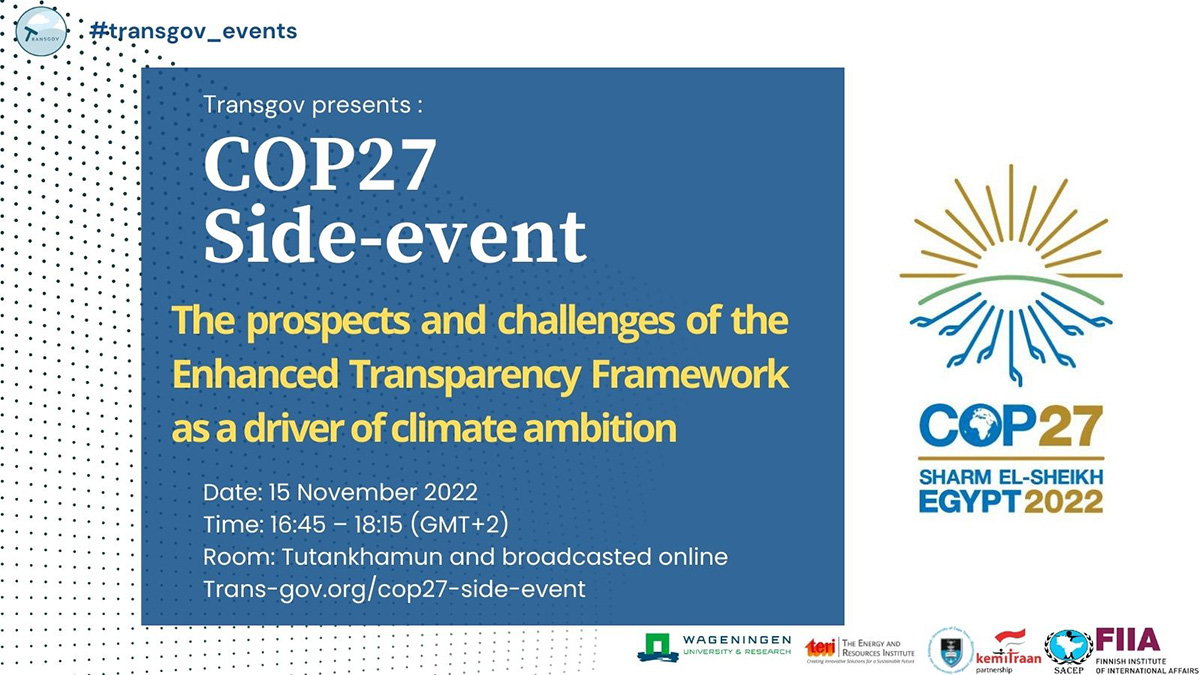The prospects and challenges of the Enhanced Transparency Framework as a driver of climate ambition

On 15th November 2022 | 16:45 – 18:15 (GMT +2)
“You can manage only what you measure” is a thumb rule of evidence base policy making and planning. The Paris Agreement requires all countries to continuously increase their mitigation ambitions such that the end result is that the temperature rise is restricted to less than 2 degrees Celsius. Whether or not all countries’ efforts are adding up to that goal requires continuous, comprehensive, comparable measurement, monitoring, sharing, and learning. The Enhanced Transparency Framework (ETF) of the Paris Agreement is designed as a template for reporting and reviewing the progress and distance from the global goal.
The ETF is inherently linked with the iterative process of the five yearly Global Stocktake (GST) interspersed with regular reporting and review cycles of NATCOMs and BURs. This exercise should ideally lead to continuous learning and trust-building between countries. This will also help domestic policy making by building a national updated database and identifying important stakeholders. The ETF is the critical building block for successful achievement of the goals of national NDCs, Long-term low-emission development strategies, and over all the goal of the Paris Agreement.
The ETF, however, poses difficult challenges for the developing and least developed countries. There are significant constraints of institutional, technical, and financial capacity in collecting, reporting, and analysing information. This gap between expectation and capacity gaps relating to ETF, could defeat the purpose of the Paris Agreement. Without adequate information, political issues such as equity and CBDR&RC in burden sharing will be severely undermined and can stall the cooperation and progress toward less than 2 degrees C temperature rise goal.
The ETF becomes operational in 2024, and expectation is that it will begin a new era of transparency. It is therefore, important to take stock of where we stand, what are the issues and diverse perspectives on transparency on mitigation, adaptation, development, and equity, and what can be done before the ETF formally kicks in.
Description/Objective
This side event brings together academia and practitioners from three different continents. Academic theories offer a good lens to analyze the facts, and facts help in refining the academic and policy perspectives. By bringing together diverse perspectives from different contextual and professional backgrounds we aim to deepen our understanding of the opportunities and difficulties related to ETF. The side-event builds upon a webinar hosted prior to COP27. The recording of the webinar is available via this link.
Target group
This side event is addressed to a range of stakeholders and actors, from the actors involved or interested in global climate governance and its infallible dependence on the national governance capacities. This includes Parties, observers, students, academics, practitioners, and other interested actors. The talk is to cater to both novices and experts in the field of climate transparency.
